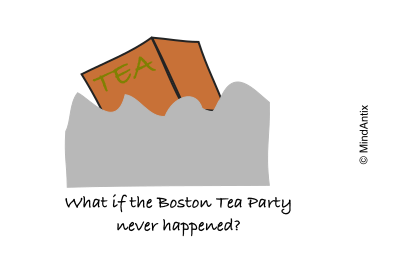What if Adolf Hitler had died during World War 1? Would there have been a second World War? Or, what if the Boston Tea Party never happened? “What if” questions like these, or in other words, counterfactual questions, have lately become a genre of historical research. But are such questions useful? Is there any benefit to speculating on events that never took place?
While some people dismiss such hypothetical questions as merely entertaining, Professor Richard Lebow believes that Counterfactuals are “essential teaching tools and critical to establishing claims of causation.” He showed that counterfactuals help in a few different ways:
- Better understanding of different underlying factors: We have a natural bias to ascribe an outcome as inevitable by highlighting some factors more that others. In addition, once the outcome is known, we find it harder to appreciate additional forces in play (“certainty of hindsight bias”). As Lebow puts it, “By tracing the path that appears to have led to a known outcome, we diminish our sensitivity to alternative paths and outcomes.”
- Evaluating theories and interpretations: By examining the counterfactual associated with a causal theory, we can make explicit the assumptions in the theory. In Lebow’s words, “Counterfactual experiments can tease out the assumptions—often unarticulated—on which theories and historical interpretations rest.”
- Assessing outcomes of real world policies or events: Counterfactual thinking helps in evaluating how a particular policy might play out in the real world.
Historical counterfactual questions like the ones in the “Virtual History” category at MindAntix, don’t just help understand history better, they also tickle your creative nerve. For counterfactuals to be useful, they need to be plausible – which means that both divergent (coming up with different turning points) and critical thinking (integrating with historical facts) gets exercised. Creativity isn’t just about being imaginative – a solution to has to be both original and appropriate for it to be truly creative.
So, what’s the best way to solve these historical “What Ifs”? There is really no right answer as long as relevant facts have been used to construct a plausible scenario. However, there are some biases to be cautious of:
- Neglecting general causal forces: A common mistake is to assume that if an event X had not occurred, things would have gone on as they did before X. For example, if the Romans had not been defeated at the Teutoburger Wald, the Roman Empire would have expanded into current day Germany. The fallacy with this theory is that it ignores the underlying forces that caused the event in the first place. In this case, the strain of geopolitical overextension faced by the Romans that would have eventually led to a defeat sooner or later.
- Making individuals larger than life: Another prevalent bias is to assume that a particular individual made all the difference in an outcome. For example, believing that if Hitler had been killed in World War 1, there would not have been a Nazi movement. This theory assumes that a leader’s charisma mobilizes groups into action. In reality it’s the other way around – charisma arises in times of social unrest and creates leaders. Charismatic leaders are replaceable – when one is eliminated, a new one can easily take it’s place.
Counterfactual reasoning, or the ability to reflect on alternate possibilities is a developmental milestone that occurs around the age of 5-6 in children. Such reasoning, even for day to day events, helps in learning from mistakes and improving outcomes in the future. Historical counterfactuals are a great way to develop such reasoning while building a deeper understanding of that historical period. What ifs can show that “small accidents or split-second decisions are as likely to have major repercussions as large ones.“

